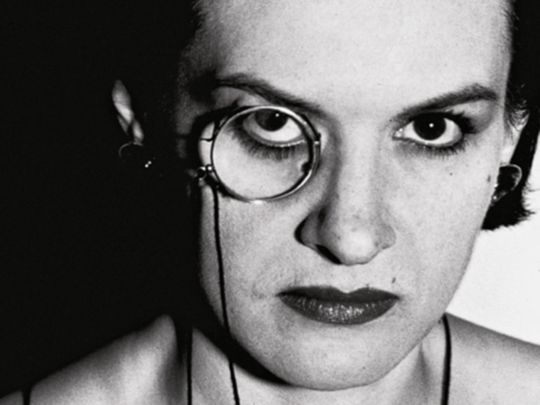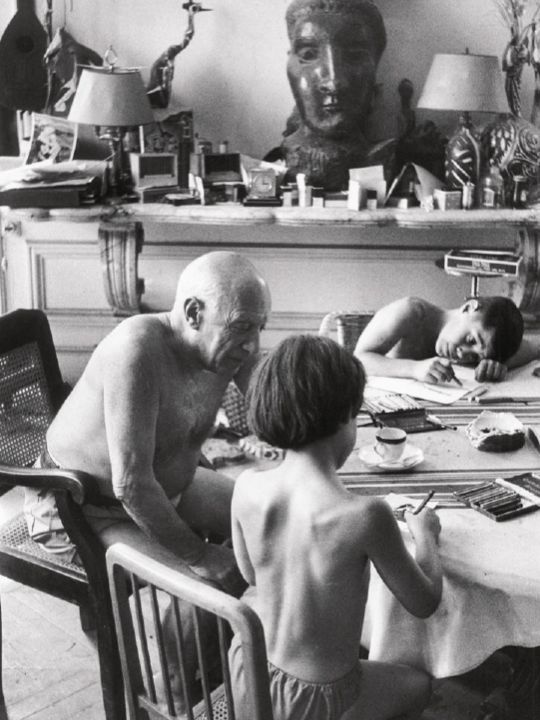
Paloma Picasso, the most elegant woman in the world, daughter of the famous painter, now lives in Switzerland, where the legendary Swiss discretion seems to suit her. We spoke to her on the shores of Lake Geneva.
Citizen K Arabia: Is it true that, at a certain time, your presence alone would determine which parties were worth attending?
Paloma Picasso : Before getting into purely creative activities, I was my own creation to a certain extent. That was a time when I would go out a lot, and the way I used to dress and put my make-up on would draw a lot of attention from the public, as well as photographers, as I looked slightly ahead of my time and gave a futuristic impression.
Do you regret the time when you used to wear valuable items of jewellery to a nightclub?
During a night out at Studio 54, I wore a pair of earrings which I had designed myself, on loan to me from Tiffany. But at the end of the night, one was missing! Terribly upset, I had a look around and asked people in the club, but it was never found. It must have been sucked up by a steam cleaner, fortunately though, Tiffany was insured. I have lost other earrings while dancing and it’s awful because I do reproach myself every time I look at the one that’s left. Then I finally had my ears pierced.
Are your creations suitable for evening wear?
I produce extremely “evening-wear” pieces, but most can be worn both day and night. I always have a pair of earrings in my bag and throughout the day I can take my jewellery up a level whenever I like. I used to have three hammered metal collars that I wore around my neck, arms and as a belt around my waist.
Do you feel proud when you see other women wearing your jewellery?
One time at a restaurant in New York, I saw a woman I didn’t recognise wink at me. I tried to figure out who it could be, I looked at her and she winked at me again. It was truly bizarre… And I noticed she was wearing my earrings.
Of all these evenings, which one would you say amazed you the most?
In Venice, after an end of summer ball during the historic regatta, the big social period. Back when you would find yourself talking at two or three in the morning in a deserted Saint Mark’s Square, with only tables and chairs for company.
Who is still a friend from that golden age?
Fran Lebowitz is one. When I came to live in Switzerland, I met Grace Jones, who fell into my arms at the Montreux Jazz Festival.
Where do you design your jewellery?
I can sketch on a flight just as easily as I can in a hotel. I also have the habit of using headed hotel paper, which I carry around with me in my bag. It always brings back memories.
What kind of connection have you cultivated with Spain?
If we’re talking about a connection… My father was the most Spanish of men, but he left Spain in 1936, so I grew up in France. In high school, Spanish was taught as a second language and during my first lesson, the teacher did not want to believe that I could already speak it, so he kicked me out of the class! I went to Spain for the very first time when I was 17, so my connections with the country were mainly bullfighting and flamenco.
Considering the hell that studying at the School of Fine Arts in Paris could have been for Picasso’s very own daughter, why did you choose Nanterre University?
It was the idea of being completely anonymous and I was never singled out! I went there in 1967, and not knowing what I wanted to do, I did an English degree to give me time to think. One day in May 1968, a group of students came into the lecture hall to stage a strike. What a great idea! I left and never went back.
Have you kept any drawings that you made as a child when you were with your father?
As a child, you don’t really think about keeping things. But a drawing of mine was found after my father died. It’s a portrait of my father on skis wearing a stripy sweater with a couple of fir trees in the background. I had sent it to him with a letter during a winter school trip. And it has been returned to me, as it wasn’t a Picasso…

If nobody’s copying you, it’s because you’re not a success!
Apart from his truly valuable works, what did your father leave you that has the most sentimental value?
A portrait of me in silver, as he made jewellery. He didn’t make many pieces, for some he used dental wax. And usually these were for family members or close friends.
How do you see a slightly naive newcomer who has made their initial prototypes using depilatory wax?
It’s not exactly the same, but it’s not far off ! Before joining Tiffany, I went to college to learn jewellery-making basics. Then I met Alexandre Iolas, the great art collector, in Venice. He was wearing a lot of jewellery and suggested that I meet some people from Zolotas in Athens. So I bought some beautiful wax plaques with a large bee in one of those Parisian houses in the typical Sennelier style, and some engraving tools. Then I flew to Athens. But when I got to Zolotas’s premises, I noticed that all the jewellery had melted. They were Dali’s soft watches!
You’ve worked for Tiffany for over 30 years, have you had any major upsets?
When I arrived, there were only 12 boutiques in total — for everything! In the beginning, all their jewellery was made in the building on 5th Avenue. Elderly ladies with blue-rinse hair would sit threading pearls. Without a doubt, I made more unique pieces back then than I do now, but working with 12 boutiques is very different to 350.

The French singer Barbara passed away just 20 years ago. What are the fruits of your collaboration for her stage jewellery?
That’s how I got into this particular design world. I was asked to find a piece of jewellery for her and as I couldn’t find one, I made one. It was an exercise in culture and art. I designed a heart out of a very special material, I had put some lucky amulets inside and I thought she would open it. But she never opened it and kept it as a lucky charm.
You once said, on the subject of forged paintings, that “forgers should have their hands cut off”. Have you ever been copied yourself?
Yes, luckily! Walking around Hong Kong or on a flight, you can buy fake Paloma. If nobody’s copying you, it’s because you’re not a success!
You were a wary young woman. Is it still hard to be called Picasso?
It is very difficult, but at the same time, you have to admit that it does open a lot of doors. It was up to me to make something good come of it, to improve myself and to refuse to live as if I were cursed. I am in the public eye, so I am less free to make mistakes. I have often been pointed at, with people shouting “Oh look! It’s Picasso’s daughter!” I figured it would stop at some point so I started to relax. Once I even heard a raging madman say: “Ah Picasso, Paloma’s father!”
Do people always recognise you in the street?
One day a rather attractive, well-dressed man stopped me on a pedestrian crossing on Rue de Rivoli and said: “It’s you, you must be the pharmacist who looks like Paloma Picasso!” So I said: “But I am Paloma Picasso!” He just stood there, flabbergasted. I also love it when people ask me for directions to the Picasso Museum, as I actually live right next to it when I’m in Paris. It’s so funny watching their expressions change as I speak!
Crédits: Photos: The Helmut Newton Estate / Maconochie Photography/ Photos, supplied


